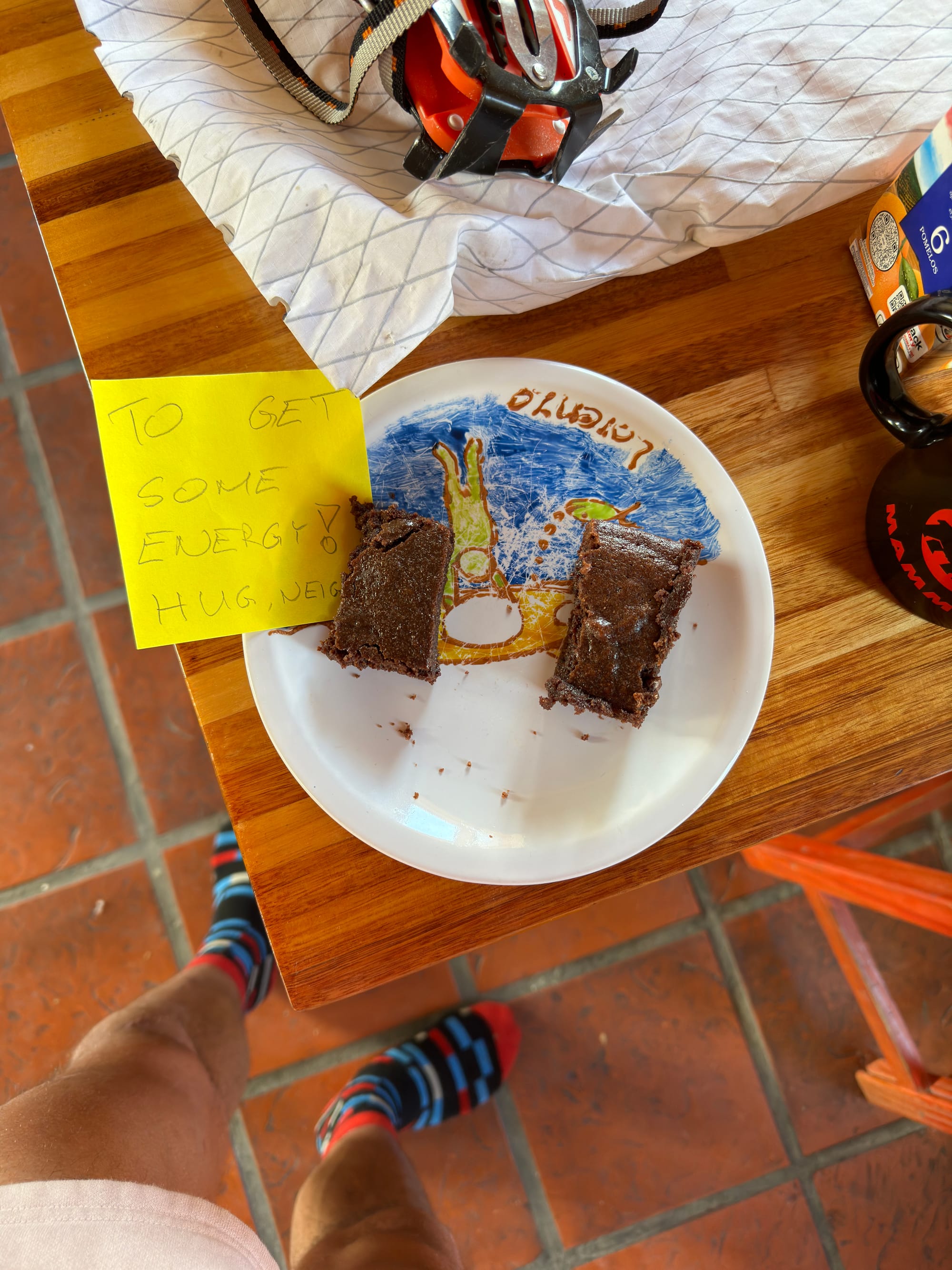El Corazón, Cerro Chaltén, over New Year's 2024
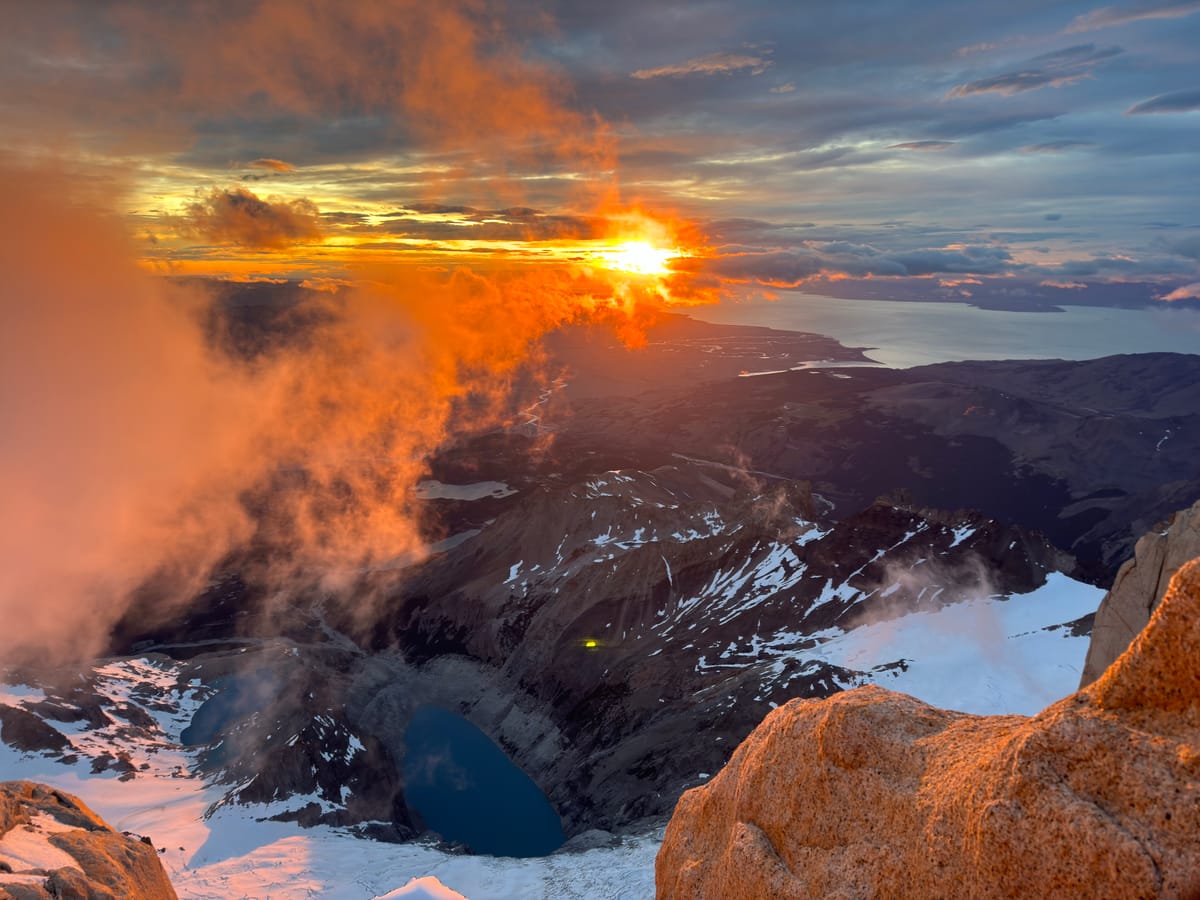
Laura and I rang in the new year of 2024 on top of Cerro Chaltén (Fitz Roy), after climbing El Corazón, a 4,000ft big wall up the east face of the mountain — a huge line that we unwittingly did in disaster style!
The New Year's weather window was iffy all along, with summit winds always forecasted a little higher than one would prefer. In the days leading up, the window would sometimes seem to disappear altogether, Nonetheless, we left for Paso Superior on Friday 29th, slept, woke up at 4am, and started towards the biggest pointy.
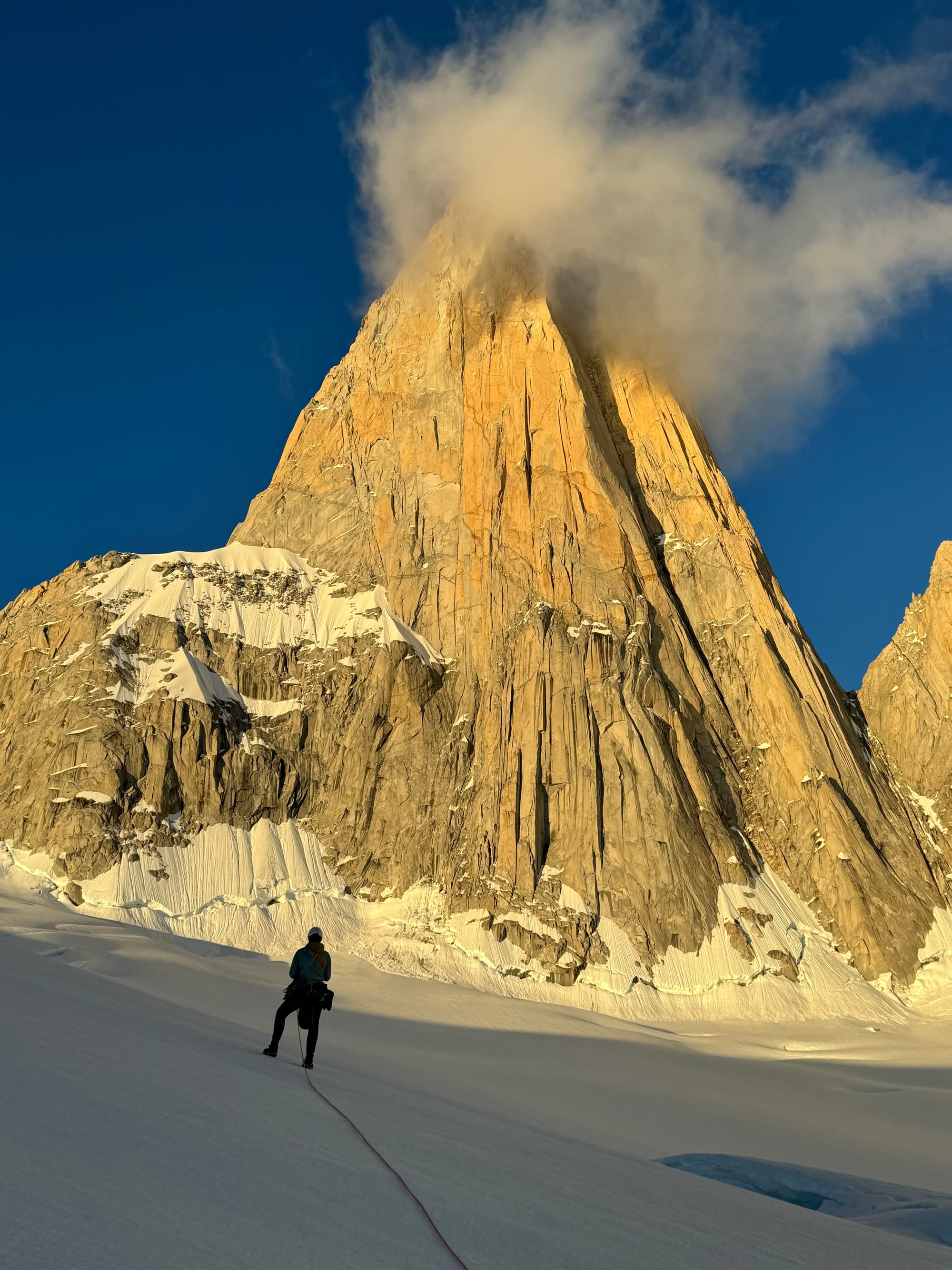
After an exciting bergschrund crossing at 8am, we immediately ran into trouble... finding the start of the route. Laura went half a pitch up a corner, but it closed up tight higher. Another promising crack further left pinched off into a thin seam. Finally, after a bunch more traversing rappels and up- and down-climbing, we found a diagonal weakness that led us upwards, 5 hours later. It seems like the original first pitch had changed from rockfall.

It was a disappointing start, and we were both a bit concerned about time, but Laura took us speedily upwards, leading through the dripping wet Aquarian Roof expeditiously. I took over at pitch 12, stoked to finally be moving upwards, dodging little cruxes with micro pendulums, tying off a huge loose block on one pitch that threatened to kill us both.
Just under 12 hours after actually starting pitch 1, we topped out pitch 16, "a very comfortable bivy"... but found half a park bench of a ledge, a foot away from the wall — drats! I wonder if this ledge, like the first pitch, had changed over the decades, the comfortable part buckling away from freeze-thaw to this poverty of a bivy. I started chipping away at the ice for melting water, showering the ledge with bits of ice that froze our butts later, while Laura dealt with the ropes. We settled for a fitful, restless sleep sitting up, sharing a single sleeping bag; by 4am we shivering ourselves awake. The streetlights of El Chaltén twinkled afar, and I stared longingly at the horizon for the first wisp of twilight.
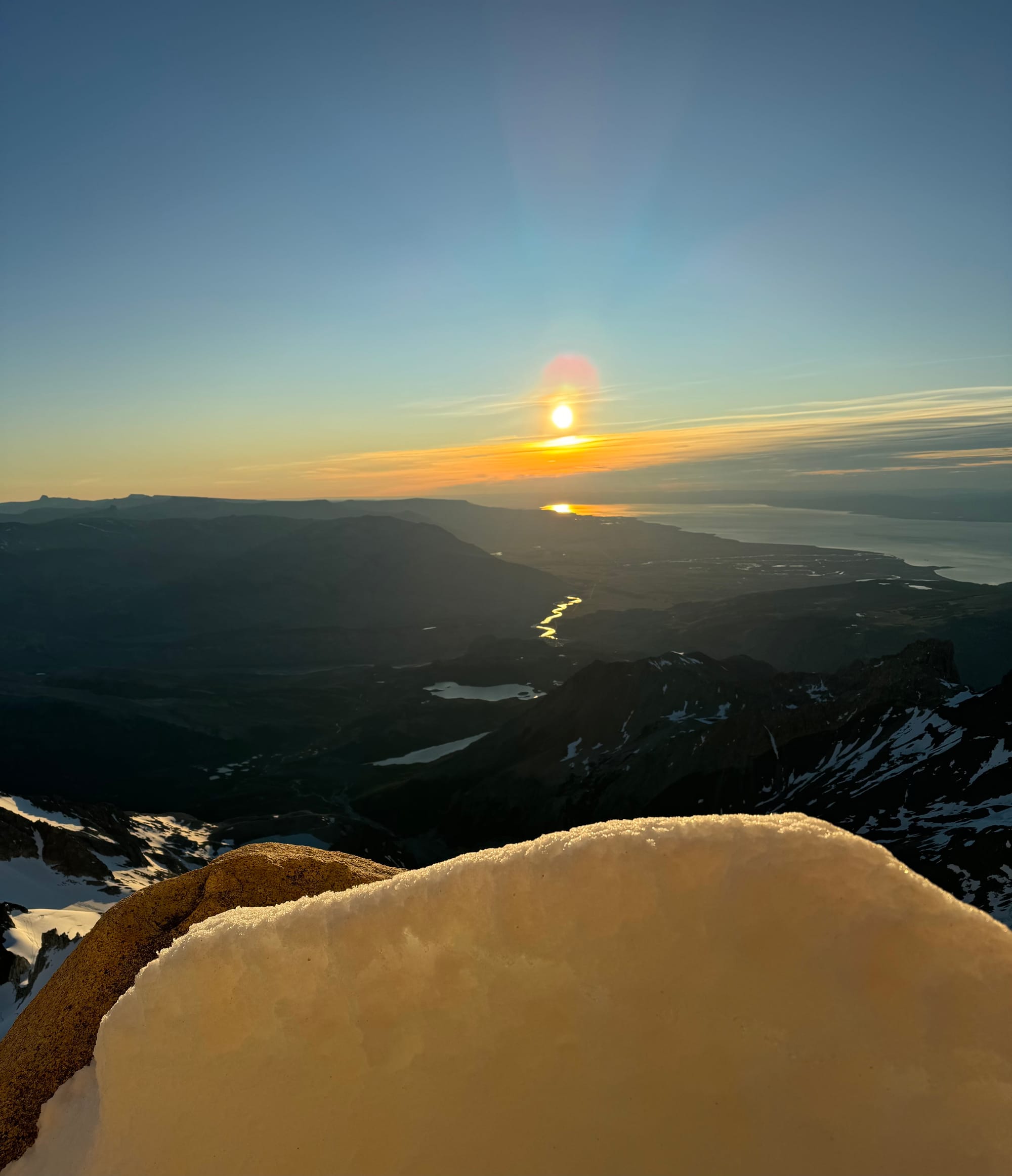
With Sunday's dawn brought blessed warmth and a renewed vigor, and by 7am I started upwards again. We were actually still sort of on schedule, but I felt a lot of self-doubt, and it took a few pitches before I found the flow again. These pitches were the meat of the route: beautiful, steep, perfect splitters, just amazing. Higher, the "Corazón", a giant heart-shaped rock scar, was negotiated handily with the beta from Colin Haley and Tyler Karow's attempt last year.
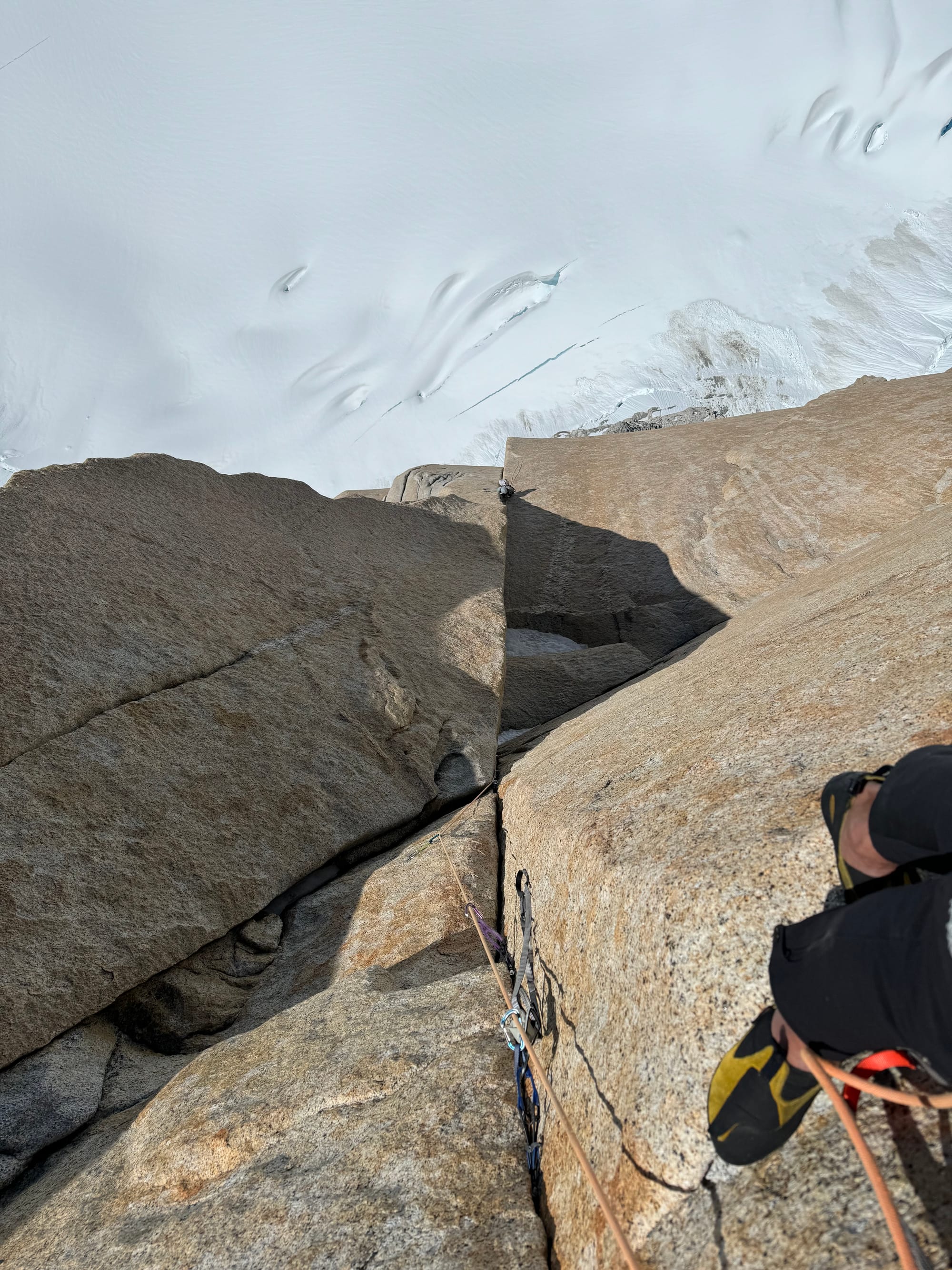
At around 9pm, we had crested the steepest part of the wall and onto the northeast "face", besides the Goretta Pilar. The summit seemed tantalizingly close, but I knew we had almost 1000ft of blocky alpine route-finding to go. It was quite calm, a little cold but not too bad. Rolo's latest forecast from that evening said winds to 30mph by 3am, then "very windy" after 6pm. Seems like enough time; we decided to go for it.
After a water-melting break, I handed the lead back to Laura. She continued up, through sunset, absolutely nailing the route-finding. The rock became increasingly glazed with ice and verglas, but nevertheless, she persisted.
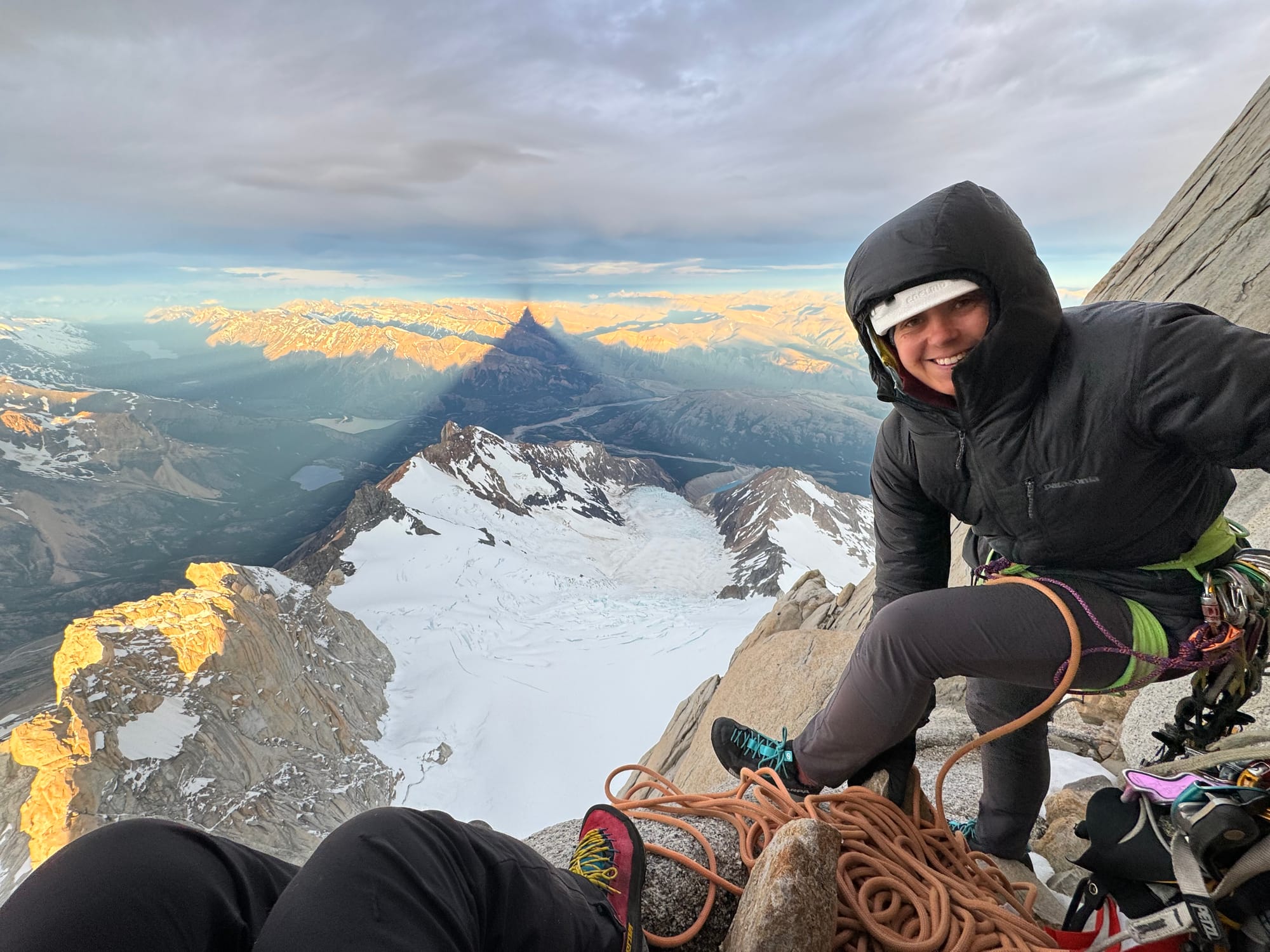
By 2:30am, now Monday, the first day of 2024, we were on the final summit snowfields. Now on the north ridge of Cerro Chaltén, we were exposed to the full force of the deteriorating weather. What were wisps of moisture had turned into a full envelopment inside a wet, cold, cloud. We could see barely 20ft around us in the fog. Rime ice started forming on zipper pulls and every crevice of clothing. I was wearing everything I brought already, but I was distressingly, uncomfortably cold, intermittently shivering; my gloves were soaked through.
I was definitely worried; I begin to wonder — wait, is this how people die in Patagonia? As their movements slow, their bodies gradually cover up with the infamous rime ice... perhaps the ice mushrooms up here, with their sensual, organic curves, are the spirits of the dead, frozen long ago into an eternal howl, a siren to future alpinists — and perhaps now, to me.
Too late to bail now, since it's faster to go up and over rather than backtrack, so upwards we went. At 3:45am we summited, and if not for the mysterious horseshoe that lives on the the summit block of Cerro Chaltén, we could not have known we were on top. We started down immediately.
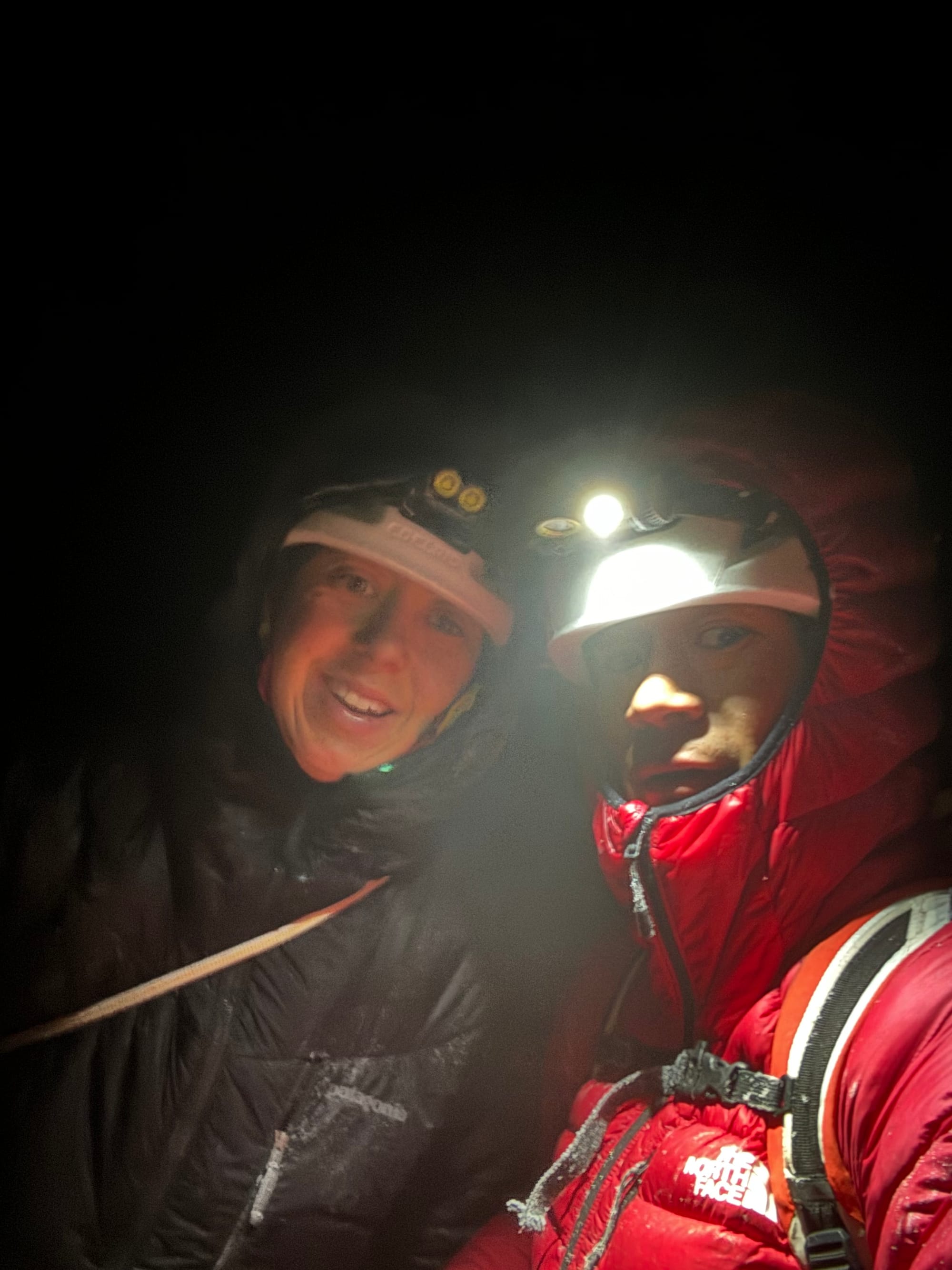
I was super cold, super tired, listless with fatigue. As I started down the first few rappels, I knew I needed to be more focused — though commonly descended, the Franco–Argentina route is not a trivial rappel, especially in these winds — but I muster no more concentration from my brain. It had been 48 hours of continuous movement, with a short, brutally restless sleep in between. Laura seemed to be doing OK though; I resigned myself to the feeble focus I could find.
During the last few hours, I had occasionally noticed a smudge of blood on a sling here, or a tiny drop of red on the snow. Haunted, I asked Laura; are you bleeding? She said no, turning back downwards to continue moving, unperplexed. I, however, became preoccupied with where this blood was coming from, or at least as much as my mind could focus on anything. I swept my body over and over again for blood. Finally, at one of the rappel anchors, I braced against the snow with my left knee, and a sunken splatter of sharp crimson soaked in, like syrup on shaved ice. I pulled up my pant leg, shocked, but it was just a tiny scratch. Laura mentioned that sometimes hypothermia and cold temperatures inhibit platelet clotting (she's a doctor); still, how can there be hours of oozing from a pinprick wound? Well, I guess I'm not bleeding out, and the cold will kill us first, so nothing to do about the bleeding right now. Nevertheless, that sight of crimson, oxygenated blood haunted me, casting a horror movie uneasiness over the perverse intensity of everything.
We continued rappelling, and paid the price for our tiredness: the rope got stuck once, then twice, both on the overhanging rappels, necessitating ascending the free-hanging ropes to free the snags. Then, a third time, the wind flicked the rope around itself and tied a perfect overhand knot 150ft up. There was nothing to do; we pulled rope as far as we could, then cut it.

It was probably 11am, still windy, still quite cold, and too cloudy to be sunny, but I had relaxed somewhat given we were halfway down the descent (and that I had found the source of the blood). The severed rope threw into sharp focus how many factors were already stacked against us, and how things could still go very wrong. This galvanized about 10 minutes of concentration, which we used to figure out how to rappel on the remaining lead line and our intact, but super skinny, tagline. Then my brain fog returned. I would find myself staring at the anchor when it was my turn to rappel, my thoughts stalled out, trying to figure out what to unclip and clip, completely bewildered.
Eventually, we made it down to the saddle, the "Brecha", the wind howling but with a serious sigh of relief, and then more rappels down to the glacier without further incident. It was now 6pm, over 12 hours after we started rappelling. We staggered thankfully down the tracks on the glacier, looking forward to food, rest, and shelter at our tent in Paso Superior.
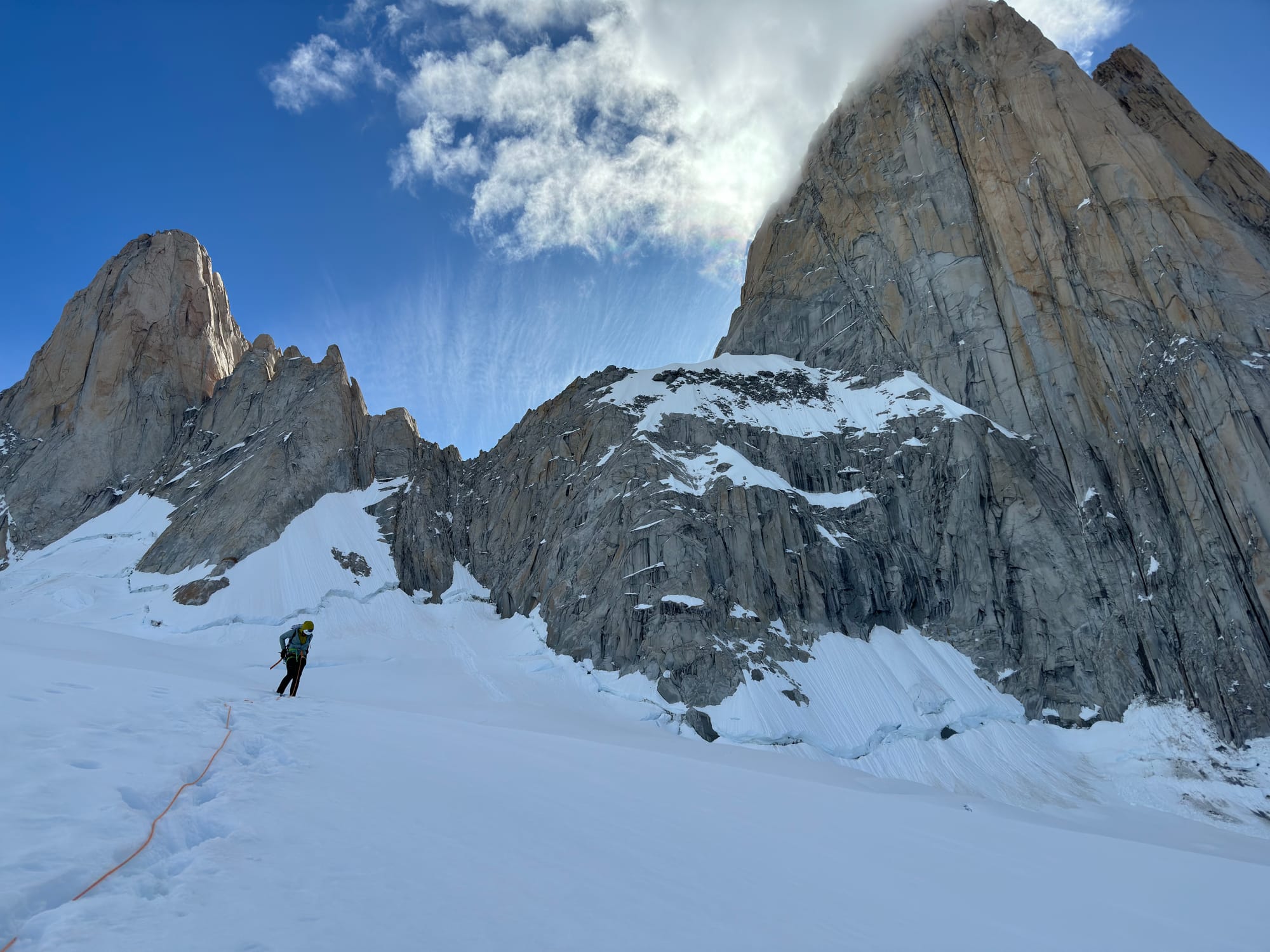
As luck would have it, the tent was nowhere to the seen; it must have blown away in the wind today, despite us having collapsed it and tied it down securely. We remembered distinctly how Laura had asked me before we left, "do you think we should put rocks on top of the tent?" and I, concerned about wind tearing the fabric of the tent against the ballast, had said no. (Back in town afterwards, Colin gave us a great tip of instead putting rocks inside a backpack inside the tent.)
We were distraught. There were many things inside the tent, some expensive, all hard to replace, some irreplaceable (most of all, a homemade double bivy sack that was lent to us.) Plus, Laura had eaten her last bar over 12 hours ago, and me 6 hours ago, betting on our food stash at the tent to satiate our growing hunger. Also, we were devastatingly tired, and had planned to sleep the night here; now, an open bivy in the increasingly howling wind seemed hostile, inhabitable.

Much fruitless scampering around and peering over ridges and buttress yielded no sign of the tent, so we resigned ourselves to packing everything into one backpack, tied into our severed lead line and continued on, staggering down the glacier below Paso Superior. A mild rain started, and by Laguna de los Tres it had turned into a whipping rainstorm. Each soaked boulder formed a halo of dry dirt on its leeward side, giving its appearance a cartoon-like quality in the headlamp.
When it wasn't my turn with the backpack, I staggered around drunkenly in my sleepiness, bemused by the novel feeling of rain on my cheeks, the intensity of this hike down ironic, almost gentle, comforting. When I had the backpack, I battered down the hatches, hammering up and down the undulating trail, seeking some kind of deliverance in the punishing effort.
By 2am we found ourselves under the streetlights of El Chaltén, lights that I had stared at for two consecutive nights from high above. Now Tuesday the 2nd, the town was deep asleep, recovering from the festivities of the new year. Our own new year's celebration, having started at 4am on Saturday 30th and now stretching into its 70th hour, was finally over. Disaster style, indeed.
